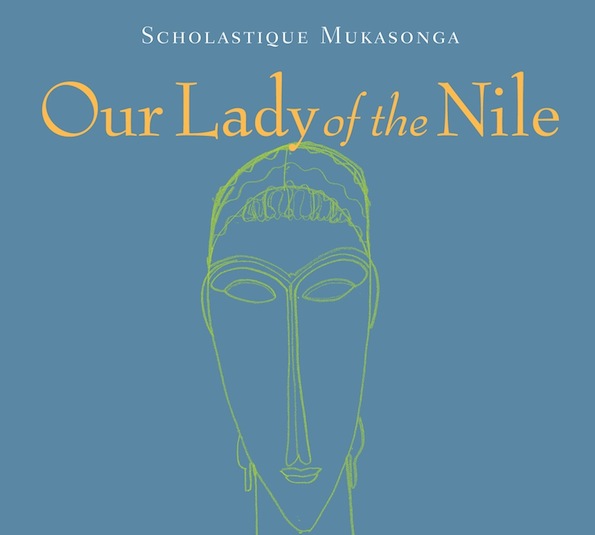Barnes & Noble Review : Our Lady of the Nile

Vous pouvez lire sur le site de Barnes & Noble une critique par Christopher Byrd sur ‘Our Lady of the Nile‘,
la traduction américaine de ‘Notre-Dame du Nil’.
Visitez le site de Barnes & Noble Review pour lire la critique:
http://www.barnesandnoble.com/review/our-lady-of-the-nile/
Twenty years ago, one of the most comprehensive bloodlettings in human history happened in the small Central African country of Rwanda. Beginning in April and continuing for some 100 days into July, a state-sponsored campaign of mass extermination was waged by the country’s majority Hutu population against their Tutsi neighbors. It is estimated that between 800,000 and 1 million people were murdered. According to Survivor’s Fund (SURF), this averaged out to six men, women, and children killed every minute—a rate that surpassed that of any Nazi concentration camp. Descriptions of the slaughter return frequently to the stupefying amount of physical labor involved. Whole communities—kids included—were mobilized to take part in the killings. On the radio, citizens were exhorted to use whatever makeshift weapons were available: knives, clubs, rope, machetes; little was distant or antiseptic about this butchery.
One needn’t lean on metaphysics or theology to grapple with the roots of such evil. As Scholastique Mukasonga shows in her expeditiously paced novel, Our Lady of the Nile, an ideology of resentment—a hangover of Rwanda’s colonialist history—was lodged throughout the country well before 1994. Mukasonga sets her novel at a lycée for girls fifteen years prior to the genocide. By adapting the genre of the boarding school novel, she gives a universal texture to the resentment, envy, and opportunism that are a part of any student body—but which in this context laid the runway for the physical and sexual violence perpetuated on the behalf of what the world would come to know as Hutu Power.
Nestled high above a valley, in the Nyambinombe district, the school takes its name from a statue of the Virgin Mary located some two kilometers away from its campus where it overlooks a stream credited as the source of the Nile River. As the book’s narrator, students, and teachers eagerly note, Our Lady of the Nile is tasked with grooming the country’s young, female elite. Although the Mother Superior who heads the school pays lip service to the idea that the young women in her charge might use their education to secure prominent positions in the labor force, most of the students view such contentions as vapid idealism that does not speak to their predicament.

“That’s enough,” Gloriosa said… “It’s time we remembered who we are and where we are. We are the lycée of Our Lady of the Nile, which trains Rwanda’s female elite. We’re the ones who’ve been chosen to spearhead women’s advancement. Let us be worthy of the trust placed in us by the majority people.”
“Gloriosa,” said Imaculée, “do you think it’s already time for you to give us one of your politician-type speeches? Like we were at a rally? Women’s advancement, well let’s talk about that! The reason most of us are here is for our family’s advancement, not for our own future but for that of the clan. We were already fine merchandise, since nearly all of us are daughters of rich and powerful people, daughters of parents who know how to trade us for the highest price, and a diploma will inflate our worth even more…”
“Just listen to her,” jeered Gloriosa, “she’s talking like a white girl in the movies, or in those books the French teacher makes us read.”
There is a stagy quality to some of this dialogue which — though obviously called out in the above — nonetheless crops up elsewhere. At times, the characters feel a bit artificial, as if they are informing on themselves:
”Listen, Virginia, there’s something I want to tell you. But don’t breathe a word to anyone.”
“You know we Tutsi never reveal our secrets, Veronica. We’re taught to keep our mouths shut.”
Though the dialogue skews too much to blatant declarations for my tastes, Mukasonga is a gifted storyteller with a sure sense of plot construction, and an aptitude for crafting piquant descriptions. Despite my quibbles, Our Lady of the Nile swept me up with its artful bitterness. The novel has many targets. Like the skin-whitening creams pedaled to black women, or a teacher who buys into the sort of notorious argument advanced in Hegel’s Lectures on the Philosophy of History (1837) that Africa has “no historical part of the World”—which is recast in the novel’s parlance as “History meant Europe, and Geography, Africa.”
Mukasonga rightly traces the origins of the Hutu-Tutsi conflict to European, or more precisely Belgian colonialists who pursued a divide and conquer strategy by elevating the Tutsis in society on account of their supposed racial superiority—lighter skin tone, smaller noses, etc. These spurious racial generalizations took corrosive hold over the society despite the fact that Hutus and Tutsis had intermarried for generations, leaving their bloodlines indistinguishable. By the time the colonialists switched sides and backed the Hutus over the Tutsis near the end of their colonial tenure, a perilous sense of grievance was cultivated in a top-down fashion that a militant, political class used to consolidate power.
If Our Lady of the Nile is constrained by its tendentious characterizations of people—each character a political point or archetype—it is buoyed by its air of foreboding consequence that imparts urgency to almost every page.



